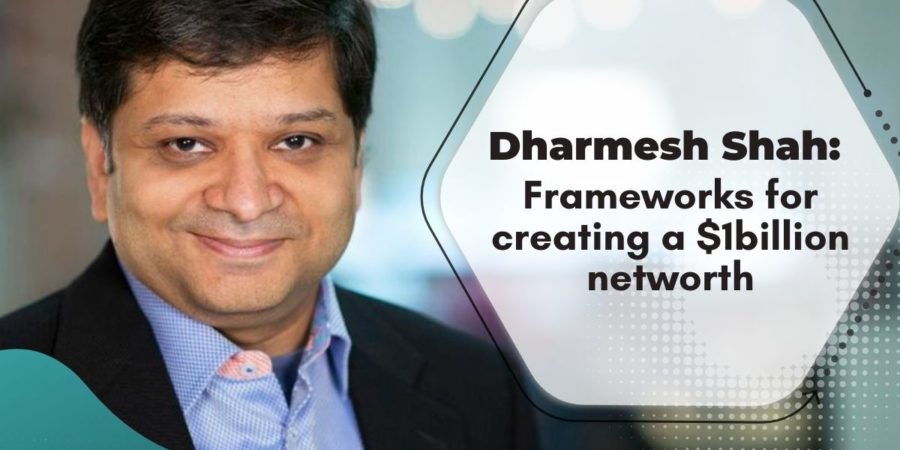Dharmesh Shah’s Frameworks for Creating a $1billion Net Worth
Intro
An early investor in Coinbase, Dropbox and many other successful tech companies. Co-founder and CTO of Hubspot and now worth north of $1billion after Hubspot’s recent share price increases. Dharmesh shares some of his frameworks in this episode of my first million.
Big Idea’s
We undervalue our time.
• We spend the first half of our lives converting time into money and spend the later half desperately trying to repurchase time with our money.
• Instead, recognise time is the only truly scarce resource and start caring about it now.
• You can use an hourly rate to value your time and delegate everything that costs less than that hourly rate.
• Dharmesh recommends starting with an aspirational hourly rate, which seems crazy.
• An example: Don’t spend an hour returning a product to get a $30 refund if your time is worth $100 per hour.
• If you follow this rule for long enough, your aspirational rate will become your actual rate.
Supporting Story
Dharmesh Was making $3.25 per hour working full-time while studying for his degree. It took him seven years to complete a four-year degree due to his need to work. Nothing at this point was delegatable as the value of time was too low.
Once he started earning $20 – $50 per hour, he could bill as much time as possible at this rate and delegate low-value tasks to give him more billable hours.
His pivotal moment came when he got a job as an engineer, which bumped him to $120 per hour – that seemed ungodly at the time. He upped the stakes and delegated every task that cost less than $125 per hour, even if he paid a premium like $75 per hour to mow his lawn.
Given his current net worth that he’s accumulated, working an average of 60 hours a week for 30 years, his time is now worth $10,000+ per hour.
Wealth has diminishing marginal returns.
• The most significant benefit to a $1billion net worth is the freedom to choose what you want to do with your time.
• When you work for a living, you don’t have a lot of control over what you do with your time.
• As your wealth increases, freedom does not, at a certain point; wealth is just a number on a scoreboard.
• Dharmesh’s magic number is $5million beyond that point. He doesn’t believe wealth has a dramatically positive effect on someone’s life.
Work to your strengths
• Too many people worry about and spend all their time trying to improve their weaknesses.
• Instead, you should work to your strengths and get other people to help where you are weak.
• Dharmesh, for example, doesn’t have any direct reports as Hubspot because he isn’t a good manager, and instead of spending the next five years trying to become one, he can invest that time into building a fantastic product as the CTO of Hubspot
• Dharmesh has one exception to this rule; copywriting
Actionable Takeaways
Copy-writing is entrepreneurships most underrated skill.
• Dharmesh believes copy-writing might be entrepreneurship’s most undervalued skill.
• Copywriting gives entrepreneurs a lot of leverage and can significantly influence a startup’s early life outcome.
• If you spend 20 – 50 hours reading the three best books on copywriting and practising the craft, you can improve significantly.
• Copy-writing is excellent because you can objectively measure your progress. Conversion rates, clickthrough rates and so on tell you if you’re improving or not.
How to create the best lead magnet you’ve never heard of
• When Dharmesh started Hubspot, he created a tool called ‘website grader’ to help them find customers that were a good fit for Hubspot. The agency identified how well a website had been SEO optimised based on Alexa’s signals to rank websites.
• The tool blew up, and over 100,000 people had used it to analyse their website within a short period.
• Everyone who used the tool had to enter a name and email address, generating Hubspot 100,000 potential leads.
• Dharmesh calls these diagnostic tools and thinks they’re great for lead generation.
• Build a diagnostics tool for people in your industry to help them discover a problem
• Ideally, your product or service provides a solution to that problem, so the tool sells your product or service for you.
• The best way to grade (diagnose) is by giving people a score, i.e. make it a game and make the score relative, like out of 100 compared to everyone else that uses the tool.
How to assess new ideas
• Use the three p’s to assess any new idea; profit potential, passion and probability of success.
• Profit potential = The total potential of the idea
• Passion = How much passion does the founder have for the idea
• Probability = What’s the probability of the idea succeeding
• Score each factor out of 10 and multiply the scores together to get a total sum out of 1,000. So if rated 7/10, 8/10 & 3/10, your total score is 168/1000 which is very low.
• Many people make the mistake of only assessing the probability of success. But a 1% chance of achieving a $100 billion outcome still has a high expected value, i.e. $1billion.
• Bad ideas and great ideas are easy to spot. Good ideas are dangerous. They can work and take the same amount of effort as a great idea but will only lead to mediocre results. Many entrepreneurs lose 3,5,10 years chasing good ideas instead of great ones.
• You’ll always have another idea, so don’t get locked into one. Give it a shot and move on if it doesn’t turn out the way you expected it to.
• Finally, don’t over analyse; just start.


